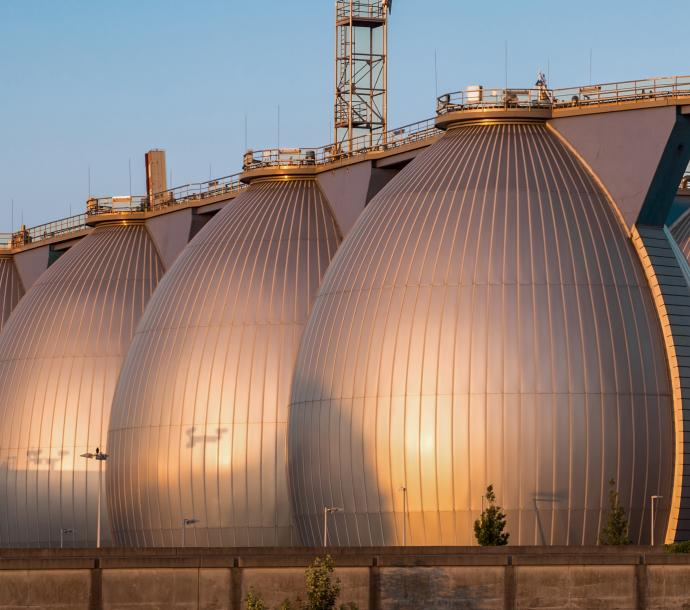For sewage sludge disintegration to produce optimum results, it has to be adapted to the treatment plant in question.
VTA relies here on true-to-scale pilot plants and many years of experience.
Every sludge is different: a well-known adage in wastewater circles that contains much truth. ‘That’s why it’s simply not possible to design sewage sludge treatment processes on the drawing board and install them without making allowance for the ins and outs of the particular treatment plant and its sludge properties’, explains graduate engineer Dr Bernhard Eder, Head of Research and Development at VTA Technologie GmbH.
The same goes for sewage sludge disintegration in sludge treatment. Before committing to it, the matters of whether the sludge is suitable for disintegration in the first place and how much energy is needed for constructive optimisation must be clarified. For every project, VTA therefore offers extensive sludge analysis and disintegration trials with true-to-scale pilot plants – directly on site at the treatment plant. The solutions on offer range from small 20-litre plants to large-scale pilot plants for series of tests extending over several months at treatment plants with a capacity of up to 500,000 PE (see illustration).
Use in practice confirms test results
‘At this point, we can draw on years of experience with our pilot plants. And it is clear that their results are largely in agreement with the subsequent results obtained in practice’, reports Bernhard Eder. On the basis of these pilot projects, VTA’s specialists can estimate how much energy is needed to sufficiently disintegrate thickened sewage sludge using the patented VTA ultrasonic disintegration system (GSD). The energy supplied has to both destroy the sludge flocs and also sufficiently damage the cells to allow the components of the organic sludge to be broken down more effectively and to a greater extent in the digestion process.
Floc destruction is not enough
Destruction of the sludge flocs alone requires only a small amount of energy. It causes homogenisation of the sludge, increasing the active surface area, which has a positive effect on the subsequent digestion process. However, this is not enough to achieve the intended effects – a significant increase in gas yield and a significant reduction in sludge volume. ‘It is only when the energy input is increased that the walls of the cells in the immediate vicinity of the energy source are damaged to the extent that the intracellular substance is dissolved’, explains Dr Eder. This effectively supports hydrolysis as the first phase of digestion. This not only results in a more effective and faster breakdown of organic substances in the digestion process, but also enables the degradation of so-called facultative anaerobic organisms, which without disintegration would survive both aerobic and anaerobic stabilisation undamaged.
In all VTA disintegration applications, a minimum amount of energy is used to ensure that the degree of cell disruption necessary for the optimisation of digestion is actually achieved. The amount of energy required to do this depends on the sludge properties at the treatment plant. A guide value is approx. 0.10 kWh/kg solids content. However, only the pilot plants used by VTA Technologie GmbH can provide precise values and the certainty that operation can be optimised.
Field report from the VTA Group’s scientific journal “Laubfrosch”, issue 72
Dr.-Ing. Bernhard Eder
VTA Technologie GmbH
‘At this point, we can draw on years of experience with our pilot plants.’
Aanvraag
Wenst u meer informatie over onze producten?
Neem dan contact op met onze experts, samen vinden we een passende oplossing.





